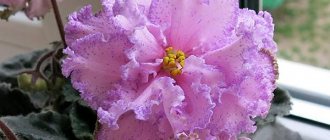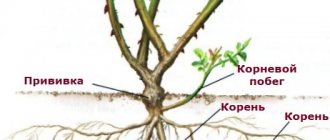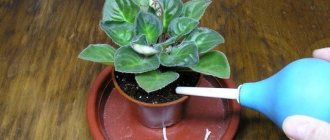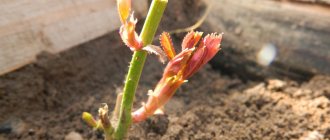Violet (Saintpaulia) or Saintpaulia belongs to the herbaceous perennials of the Gesneriaceae family. It was first discovered in the nineteenth century in the highlands of the African continent. Its flowers had a simple shape and purple color.
Today, through the efforts of breeders, many hybrid varieties of violets have been developed, which have a variety of foliage and flower shapes; they can be either plain or multi-colored, have corrugated edges, borders, and fancy patterns.
Burgundy violets
The violet with blue flowers is the progenitor of all subsequent generations.
Breeders are constantly working to develop new colors of Saintpaulia. The most difficult ones are green and yellow. Burgundy violets are very popular. They can be single-colored or consist of 2 or more colors. Chimeras and violets with imprints are prized.
In appearance, burgundy violets have one of the following forms:
- pansies;
- stars;
- bells;
- bowls;
- wasps.
According to terryness there are:
- simple;
- scallop;
- semi-double;
- terry;
- in the form of carnations.
Classification according to the degree of doubleness of the flower.
The decoration of burgundy violets is a border and fringe.
Important! Thanks to the variety of shapes and colors, everyone can find their own unique Saintpaulia.
With flower prints
Below you will see photos of burgundy violets with spots and splashes of various colors on the petals.
Glimmar
The author of the delicate, fragile Saintpaulia is Kent Stork, a breeder from the city of Fremont (Nebraska, USA).
The variety does not cause problems in care and maintenance. Does not like changes in lighting and temperature.
The flowers are in the form of simple stars, the color of the petals is fuchsia-red fingers on a light background. Blooms powerfully. Peduncles are quite strong.
The leaves are dark green. The socket is large, smooth, nice, standard.
RM-Amalia
The owner of this beauty is a breeder from Kursk, Natalya Skornyakova. RM-Amalia grows easily and blooms quickly.
Flowers are in the form of simple large stars (up to 7.5 cm). Petals with a wavy structure, white with bright cherry imprints. It blooms very impressively and profusely. It blooms with a beautiful hat. Color appears most vividly at high temperatures.
Leaves are green. The socket is standard, flat.
EK-Shanghai rose
The author of this unusually beautiful variety is Elena Korshunova. This is a sport from the EK-Gardens of Babylon variety.
The flowers of the Shanghai rose are similar to a rose - huge, airy, with a dense structure. The color is not too bright, dark red. The petals are decorated with a wide white border. The peduncles are strong, droop slightly, but bear flowers well.
They love light very much. It is better to use wick watering.
The leaves are green and pointed. The socket is neat, for display. Easy to put on.
RS-Duchess
The author of the luxurious lady is Svetlana Repkina (Lugansk). The variety is hardworking and blooms profusely. Tolerates heat well.
The first flowering may not meet your expectations, remain patient - everything has its time. Maybe go into sports.
The flowers are luxurious, very large semi-double and double, the color is white with plum prints. The petals are corrugated and airy. The balloons form a lush, beautiful bouquet.
The leaves are quilted, the color is medium green, quilted. Standard socket.
With border
This section presents the names of burgundy violets with a white border.
Powder Keg
The author of the elegant violet is breeder Paul Sorano. It grows slowly. Blooms for a long time.
The flowers are quite large stars, semi-double or double, the color is bright dark red with a white border. Wavy petals. At the first flowering, the peduncles are low, at the second they become longer.
When there is insufficient lighting, the color becomes darker.
The leaves are dark green, with red on the reverse side. Socket up to 45 cm, large standard.
Red Lantern
The author of the Red Lantern variety is breeder Paul Sorano. It exhibits varietal characteristics well, is unpretentious in care, and reproduces easily.
The flowers are beautiful, semi-double, velvety stars, the color is rich dark red, may have a slightly noticeable pearlescent tint, the border is white. This dark burgundy violet blooms for quite a long time.
The leaves are dense, dark green, and red on the reverse side. Great standard.
Emergency
The author of this elegant variety is Kent Stork, a breeder from the city of Fremont (Nebraska, USA).
The flowers are semi-double pansies, the color is bright red. The petals have a clear white border. Peduncles are slightly long. Blooms profusely.
The leaves are bright, dark green. The socket is standard. Sometimes it lifts leaves up.
Attention! It does not require special care. Loves natural light, in bright light it becomes more terry.
Arcturus
The author of this bright variety is the breeder J. Eyerdom. The flowers are similar to Emergency, but lighter, bloom more luxuriantly and profusely. Propagates easily. Loves light.
The flowers are semi-double, dark red in color with a white border. Petals with wavy.
The leaves are ordinary, dark green, juicy, and may have a yellow tint. Standard socket.
Violet EK-Shanghai rose (E. Korshunova)
Unusual violet Shanghai rose.
He was not among the first . But the attention and interest in it among flower growers does not decrease.
What type is the variety?
- Terry violet (star) with thick dark red petals. And with a rather wide white border on corrugated pointed petals;
- In the lower rows they are large. Up to 8 cm . And the top ones are smaller.
History of creation
It is declared by breeder Elena Korshunova . This is how it turned out when breeding new indoor violets from the variety of her Gardens of Babylon collection.
Since 2008, it has been sold to flower growers.
Description and photo of the variety
This variety belongs to the standard types.
Based on the size of the rosette, this violet is classified as a standard bush. The size of the outlet directly depends on the care. And often they are more than 30 cm in diameter. It’s not for nothing that flower growers call them exhibition ones:
- Long petioles with green pointed leaves. The leaves seem to be a little quilted;
- And very beautiful dark red flowers with a white border. It unevenly covers the edges of the petals.
Propagating violets at home: 2 ways
Basically, Saintpaulias are bred with leaves, segments from plates, and rosettes. And although this can be done all year round, experts say that it is still better to propagate the plant in spring or summer. This is due to the fact that during this period there is more heat and light - necessary factors for the rapid rooting of planting material.
Leaf
Leaf propagation is the simplest method. Cut the plate under the peduncle from a completely healthy plant. The cut needs to be dried for about half an hour. Fill a small dark glass jar (you can use a pharmacy bottle) with cool boiled water and activated carbon powder.
Cover the top with film, cut a hole and stick a leaf into it. When the roots appear, move them into the soil. A greenhouse can be easily made from a plastic bottle. The babies will arrive in a couple of weeks. You need to wait until the leaves reach 1 cm in diameter and plant them in pots.
By division
In pots with violets, several leaf rosettes are often formed at once. They are separated with a well sharp knife. At least a small spine remains on each part. The delenki are immediately planted in the ground.
This video shows the transplantation of Uzambara violet (Saintpaulia) babies.
Soil for violets
The substrate for violets should be nutritious and at the same time loose and breathable. You should also take care of the sterility of the soil mixture, since violets are susceptible to various fungal infections and rot easily.
Soil for violets is sold in flower shops in an assortment. Every potting mix manufacturer provides customers with substrates for these popular houseplants. To sterilize purchased soils, heating or freezing at low temperatures is used.
It is difficult to prepare soil for violets yourself. But if you really want it, you can try it. The soil for violets should contain:
- Leaf soil from under a birch or linden tree - 2 parts;
- High-fiber coarse peat – 1 part.
Humus is added to the resulting mixture - 1/10 of the total volume.
Perlite and vermiculite are used to loosen the soil. They are mixed in equal parts and 1-2 cups are added to 1 bucket of soil mixture.
Ready soil for violets must be steamed. This procedure destroys pest eggs, harmful bacteria and fungi.
Features of care
Nuances of conditions of detention
There are no special conditions for growing the bulk of large-flowered violets. The main and most important requirements are for:
- pot size;
- quality and composition of the soil;
- lighting;
- temperature;
- choice of fertilizers;
- compliance with the irrigation regime.
Only some species prefer a slight decrease in temperature for a more saturated flower color or bud formation.
How to water correctly?
One of the main components of successful cultivation of large-flowered Saintpaulia species is compliance with the correct watering regime.
Like almost all types of violets, large-flowered ones are afraid of drying out and waterlogging of the soil. Therefore, you should not overdo it with watering.
The violet should not be over-watered or over-dried.
Advice! It is better to water through a tray or in small portions through the top along the edge of the container, without getting on the flowers or buds.
The frequency and volume of watering depends on several factors:
- season;
- age condition;
- the size of the container in relation to the size of the plant;
- temperature and humidity in the growing room;
- quantity and saturation of lighting;
- quality and composition of the soil.
On average, according to the recommendations of experienced gardeners, watering is carried out:
- 2-3 times a week in the summer;
- once a week in winter.
Do not forget about the quality of water for irrigation. It should be clean, soft and warm.
Lighting
The duration of daylight hours should be about 12 hours per day. But at the same time, direct sunlight should be avoided on the plant, and diffused light should be provided.
If it is impossible to provide the flower with this amount of daylight, it is better to use additional light sources, such as phytolamps.
Illumination of violets.
Important! We should not forget about resting the plant. Daylight hours should not be increased beyond 14 hours.
Nature of feeding
Additional nutrition depends on the growing season and the structure of the leaf blades. At each phase of the growing season, a certain composition of fertilizers should be applied. For large-flowered specimens, additional nutrition occupies a special place.
For full flowering of flowers of this size, the necessary composition of fertilizers, both organic and mineral, containing a full range of necessary micro- and macroelements, should be applied in a timely manner.
The soil of a newly transplanted violet becomes depleted approximately a couple of months after transplantation. From this moment on, you should add the entire complex of substances necessary for the plant for full development, growth and flowering.
In addition to the complex of basic elements - nitrogen, phosphorus and potassium in the ratio NPK: 20:20:20, the composition should also include trace elements: Ca, Fe, Mg, Mo, B, Na, Cu, Z and S.
The first nutrition is applied in the spring after the plant awakens. During this period, complexes with a high nitrogen content are used.
In the phase of budding and rosette formation, fertilizer complexes with a predominance of potassium and phosphorus are required.
Subsequent feeding is carried out with fertilizers for violets with an equal ratio of micro- and macroelements.
Reproduction
For garden large-flowered violet feeds, propagation or reproduction of new planting material is carried out by seeds, cuttings or dividing the bush.
Propagation of indoor violet (Saintpaulia) is mainly carried out by leaf cuttings, rooting them in water or substrate and then planting the children.
Reproduction by cuttings step by step.
There are varieties that reproduce very well, but there are also those that you need to tinker with, ensuring quality with quantity and creating the necessary conditions. But, basically, large-flowered species are propagated in the same way as ordinary standard specimens.
Violet, description and photo LE-English Rose (E. Lebetskaya)
Violets from breeders of the CIS countries - “A” (LE-2).
LE-English Rose (E. Lebetskaya).
LE-English Rose, LE-Angliyskaya Roza (E. Lebetskaya).
White, densely double stars with corrugated edges and a pink eye. The flower is similar in shape to the English rose.
Dark green, rounded foliage with white-lemon bordering variegation. Standard. Very neat, compact outlet.
The flowers are double, printed, like roses. The flowers are medium in size, up to 4.5 cm. Its beauty is not in the size of the flowers, but in their large number. There are a lot of buds on peduncles. Flowers bloom very slowly.
Abundant flowering the first time. Short peduncles and flowers lie on the leaves. Depending on the temperature conditions, there is either more or less pink on the flowers.
It grows and blooms slowly. Sometimes, if agricultural practices are violated, even the neat rosette inherent in a given variety can turn into a large horse.
English roses are a group of rose varieties created in the last quarter of the 20th century by the English breeder D. Austin. English roses differ from other modern varieties in the shape of the flower and the structure of the bush. They combine the advantages of ancient varieties of roses (cup-shaped flowers, harmonious bush shape, variety of flower aromas), a variety of shades and well-defined repeated or continuous flowering inherent in modern varieties of hybrid tea roses.
Do you know that…?
Overwatering of violets is dangerous when the soil composition is unsuitable - if the soil is heavy, without the addition of raising agents. The fact is that the roots need not only to absorb water, but also to breathe, and breathing without oxygen is impossible, and its amount in wet soil is greatly reduced, so the roots cannot function normally. Never plant in clean store-bought peat mixtures. Their quality does not meet the requirements for a substrate for violets. Once dry (and this happens very quickly), it will no longer absorb water except through complete immersion.
Before you buy the violets listed below, carefully read the forums about their behavior on the windowsill. Many of them are very beautiful flowers. However, these can be large rosettes with large and fragile leaves, with leaves rising up or hugging the pot, forming many stepsons that interfere with the formation of a neat rosette, pulling the stem up and growing into a Christmas tree, bending the trunk, rare flowering with long breaks, fallen flowers or they last little and quickly wither, very long and recumbent peduncles, the color of the flower fades quickly, they do not like bright lighting on the windowsill, they are afraid of the slightest drying out or waterlogging, a large percentage of them go into sports or darken the flower.
Are they suitable for your window sill and the conditions that you can create for them? You will look at the flowers for several months, and the rosette will always be in front of your eyes. There are many beautiful flowers, there are much fewer beautiful and neat rosettes, look first at the rosette! Search and you may find a dozen violets with the same flower color if you are not interested in the smallest details as a collector.
• — Annushka (Lebetskaya); • — Arabesque (Lebetskaya); • — Harlequin (Lebetskaya);
Care and cultivation of violets at home
It is believed that Saintpaulia is quite demanding in care. In fact, to ensure abundant flowering, you just need to establish a regime of watering, fertilizing, and choose the right nutrient substrate.
Temperature
The most comfortable temperature for growing homemade Saintpaulias is considered to be from +18 to +25 °C. When the thermometer is above or below the specified standards, the flower will begin to fade and shed its leaves.
It is not recommended to place plants in bright sunlight - delicate leaves can get burned. In summer, you should choose windows facing north for violets, and in winter, windows facing south.
Advice! If it is not possible to move the flowers from the sunny side, you should shade the violet. For this, blinds that control the light intensity, window foil, and newspapers can be used.
Soil for violets
Although the houseplant prefers nutritious soil, planting flowers in black soil is not recommended. The best option would be light peaty substrates. Loose soil allows moisture to pass through well and does not allow liquid to stagnate.
There are several valid options:
- A mixture of 4 liters of peat, 4 liters of vermiculite, 1 tbsp. dry mineral fertilizer, 1 tbsp. dolomite flour.
- A mixture of equal parts of leaf soil, garden soil, sand, sphagnum moss.
- Peat mixed with turf soil, manure humus, sand, sphagnum moss. All components must be mixed in equal proportions.
Flower shops offer ready-made soil mixtures for violets. You can mix the soil yourself according to one of the given recipes.
Watering
Violets need the greatest amount of moisture in the summer, during the flowering period, when the root system is developed. It’s easy to determine the need to moisten the soil - just feel and assess the condition of the top layer of soil.
Several watering methods:
Classic application of water under the stem
It is important to prevent moisture from getting inside the outlet.
Watering into the pan. The Saintpaulia root system itself will take the right amount of moisture.
Wick method
When replanting, a fabric strip that acts as a wick is placed inside the pot. The container with the flower is placed in a larger flowerpot; there should always be water in it. With the help of a wick, the Saintpaulia root system will absorb the required amount of liquid.
Important! Excessive watering can cause roots to rot. The violet will die.
How to fertilize violets?
It is recommended to choose complex liquid fertilizers for Saintpaulias as nutritional supplements. The concentrate must be diluted in the amount specified on the packaging by the manufacturer.
During the flowering period, it is necessary to water violets every 7–10 days with fertilizer.
If there are no flowers or buds, you need to reduce the application of fertilizers to once every 20–25 days.
Transplanting violets
Replacing the violet pot is only necessary if necessary. Experienced flower growers note that violets are abundantly covered with corollas if kept in a small pot. In this case, the flower does not waste energy on the formation of the root system, leaving energy for flowering.
Saintpaulias are transplanted in the spring, provided there are no flowers or buds on the plant. The new pot should be 0.5–1 cm wider than the previous one. Transplantation is carried out using the method of transshipment of an earthen clod. There is no need to remove old soil from the roots, as you can accidentally damage them.
Fragments of polystyrene foam and small pebbles are placed at the bottom of the new pot to ensure drainage. The plant is then moved from the old pot to the new one. After this, you need to add soil and lightly press it down.
Immediately after transplanting, you need to water the plant.
How to trim?
Violets do not require regular pruning. Leaves can be removed only in case of disease or for subsequent propagation.
Reviews from flower growers about the variety
Flower growers note that the Shanghai rose violet has very large and bright flowers.
Elena. At the first flowering, the peduncles were weak and the flowers were small. But the third time, a large number of large buds formed, which held on well and did not fall for a long time. The Shanghai rose violet variety is very light-loving.
Svetlana. The violet has grown simply gorgeous. The fact that the large flowers hang down a little even makes the Shanghai rose original and unlike other varieties. The flowering was very bright and quite long.
Marina. I really liked this variety. True, during the first flowering a border did not form. But the flowers were still very large and beautiful. Since the Shanghai rose violet is variable, it is possible that a border will appear in the future.
Origin and characteristics of the flower
The flower was first discovered in 1892 in eastern Africa by Governor and Baron Adelbert Walter von Saint-Paul during an afternoon walk. Noticing an unusual purple flower, he collected the seeds and sent them for research to his father in Germany, who forwarded the parcel to the director of the botanical garden in Hanover, who examined the plant and named it part of the Gesneriaceae family.
In 1893, the plant was already showing off at flower exhibitions and was officially recognized. Since then, the beautiful, tropical flower has spread and began to be grown as pets in many countries.
External description and photo
Saintpaulia is a perennial tropical herbaceous plant with beautiful flowers. The root system is poorly developed and has a fibrous type; the stems can be basal or with hanging rosettes. Depending on the variety, the diameter of the rosette varies from 6 to 55 cm. Externally, the flower can be described as follows:
- The leaves are round, fleshy, juicy, veins are clearly visible along the length of the leaf, the edge of the leaf is sharp or rounded. The surface is covered with small fibers that look like needles. The shade of the leaves is mainly dark green, but there are specimens with a light core (pink, cream, salad), some species have a red tint. The reverse side is light, silver-green. The coating can be smooth, matte or corrugated with convex tubercles.
- Stems are brown or dark red, succulent, straight. The bud stems branch into up to 15 small shoots with flowers.
- The flowers are simple with five petals and two stamens, collected in racemes. Depending on the variety, the buds are simple or double.
- The seed box is round with the presence of small seeds and gradually collapses under the influence of moisture. Botanists who breed plants and breed new varieties every year can tell you everything about indoor violets.
https://youtube.com/watch?v=wpizn24p6uc
Peculiarities
Elena works hard to create large-flowered varietal violets. The flowering stems are durable and hold up well in the form of an assembled bouquet. Saintpaulias with huge flowers are the main direction of Korshunova’s activity.
The names of flowers, as Elena says, come on a whim, some associations or memories emerge and the name of the flower is born. Elena's dream is terry bright red ten-centimeter giants with a snow-white edging in a perfect rosette.
The variety of varieties from Korshunova will delight even the most demanding connoisseurs of the color and shape of Saintpaulia. Growing a miracle yourself is a simple task, but there are a lot of pleasant impressions. Like a simplified version of Japanese Bonsai.
The best varieties of violets: description
Violets can differ greatly from each other in size, in the shape of the flowers, and also in many other characteristics - growth rate, abundance of flowering, reaction to certain conditions.
In this article, we will help flower growers understand the complexity of the classification of violet species, we will talk about the most common, original and unique varieties, their characteristics and differences from many other crops. This article will be very dense due to the amount of information, but we will try to structure it to make it more interesting for the gardener.
Saintpaulias, also known as indoor violets, are plants belonging to the clear-flowered order, the genus Saintpaulia. Due to the fact that these flowers in appearance are really very reminiscent of a real violet (viola), it is often confused with violet, and is also called African violet - in accordance with the area where Saintpaulia was first discovered at the end of the 19th century . In this article, we will still call the plant a violet, since it will be more convenient to perceive information and immediately form an image of this unusual, but very attractive plant.
Let's talk a little about what varieties of violets and species are distinguished in floriculture today.
In general, the natural distribution area of wild Saintpaulias is limited to mountainous areas, mainly Tanzania or Kenya, since in that environment the plantings feel most comfortable, it is very easy for them to grow and develop, because the air temperature and humidity are ideal.
Wild violets are also found near river banks, near waterfalls or in ravines, in the partial shade that comes from large trees. The violet does not tolerate direct sunlight at all, as it simply dies under it.
If we talk about how many species of Saintpaulia grow today in their natural habitat, then experienced gardeners count about twenty main species. We will introduce you to some of them in this article.
Velvet violet. It has jagged, round, dark green leaves that reach five centimeters in size, no more. On the back of the leaf you can see a reddish decorative pattern. At the same time, the variety is expected to bloom very luxuriantly. It consists of not very large flowers, which are colored blue-violet, and in the middle they have a dark spot that looks quite attractive. And in general, this planting can stand out against the background of many other plants, the main thing is to follow agricultural practices and care for the variety.
Grote. This is a plant that belongs to the ampelous subtype of plants. The leaves are round, slightly pubescent, painted in a bright green shade. Also, sometimes the leaves can have a bright purple color; the length of the leaf blade is about six centimeters and the width is five centimeters. The flowers are small, purple, their diameter reaches 2.5 centimeters, and there is a dark eye in the middle. In order to somehow balance the composition, you can also notice the same dark border on the petals so that the flowers look more harmonious in general.
Violet-flowered Saintpaulia (in other words, violet-flowered). This plant is distinguished by the fact that it forms a rosette of fairly large dimensions. The diameter can reach up to sixty centimeters. The stems are succulent, short, and have dark green leaves that are colored dark green.
The leaf length is eight centimeters. Next, we will dwell in more detail directly on the varieties of indoor plants, on the classification, since this is a very diverse crop, and flower growers sometimes want to navigate the varietal diversity in order to have a more extensive understanding of the culture.
Advice from flower growers
In order to grow a healthy and beautiful violet of the Shanghai rose variety, it is recommended to use the advice of experienced gardeners:
[adsp-pro-7]
- If the violet leaves wither, perhaps its rosette is deeply buried in the soil. This can also occur due to improperly selected soil, low or high temperature and air humidity, excessive or insufficient watering.
- A small number of buds and pale foliage indicate that the plant does not have enough light or nutrition.
- The appearance of yellow spots on the violet leaves may indicate that it has received a sunburn.
- If a violet does not form buds, then, as a rule, it lacks light or nutrition. This can also happen if it is kept in a room with low temperature and humidity.
When these problems appear, it is necessary to reconsider the conditions in which violets are grown and eliminate errors in the content.
Learn how to properly care for Margaret violets.
Read the description of the Ruby Mughal violet, and also read reviews about the variety.
Growing a beautiful violet with regular, abundant flowering is not always easy. But having mastered the subtleties of caring for them and putting in a little effort, it is quite possible to get a well-developed plant with a powerful, even rosette and many buds.
Growing Saintpaulias at home
Watering
Don't overdo it with watering when caring for your Saintpaulia. It is better to slightly dry out the earthen ball than to flood it. Water no earlier than the top layer of soil dries. Use warm, settled water for irrigation
Watering time is important: water in the morning in spring-summer and in the afternoon in autumn-winter. Water from above, using a watering can with a thin, long spout to prevent water from getting on the leaves.
Pour until a little water appears in the pan, then drain it immediately. Watering from below is possible. Pour some water into the pan and wait until the required amount is absorbed, drain off the excess.
Lighting
Lighting should be close to natural living conditions. Since the violet was found near a stream in the canopy of trees, where there is no direct sunlight, diffused lighting is suitable. Window sills with an eastern and western orientation would be ideal, because on the southern ones it is necessary to provide shading, and on the northern ones, without additional lighting, the plant will suffer from a lack of lighting. You can use fluorescent lamps and place violets not only on the windows, but also in the back of the room.
The condition of the plant will tell you about the correct lighting: if there is enough light, new leaves will appear and flowering will also be normal. Rotate the flower from time to time so that the light is distributed evenly
Please note that varieties with dark leaves need more light; accordingly, varieties with light-colored leaves require less light; too much light may turn yellow. In general, you need lighting for 12-14 hours a day.
Temperature
Despite the fact that Saintpaulia comes from hot Africa, it does not like high temperatures. A temperature of about 20° C is considered comfortable; only for raising “babies” you need a temperature of 22-24° C.
Step-by-step instruction
The entire breeding procedure takes about 2 – 2.5 months. Planting pattern:
- A substrate 2 - 2.5 cm thick is poured into spacious shallow trays or containers with holes in the bottom.
- The soil is slightly moistened.
- The leaves are laid out on the surface.
- You can lay the leaves sideways to save container space.
- Containers are installed in a bright, warm place, but not in direct sunlight.
- Leaves usually take root within 3 weeks.
- Next, small sockets are laid.
- The development time of rosettes is up to 2 months.
- The mother leaf dies over time.
- The children are transplanted into separate small pots with a diameter of 5–6 cm for growing.
It is advisable not to bury or stick the base of the leaf; the growing point should be on the surface.
Errors during cultivation
What to do to prevent flowers from becoming smaller?
Like any plant, violation of care requirements or failure to create the necessary conditions leads to the loss of any qualities. The main reasons for crushing flowers:
- first flowering;
- overfeeding with fertilizers;
- heat;
- insufficient humidity in the room;
- soil quality.
Why do the buds begin to shrink?
Shredding of buds in large-flowered species occurs mainly due to high temperature, dry air in the room and lack of adequate nutrition.
The root system is unable to provide nutrition to the entire plant due to heavy soil
How does a lack or excess of substances affect the outlet?
Large, strong show plants need balance - lighting and nutrition. The food should be appropriate to the size of the pot. A large crown requires an appropriate volume of roots. At the same time, overfeeding causes increased crown growth and a “clumsy” rosette.
Therefore, nutrition should be balanced, introduced “for health”, without excesses. Malnutrition leads to delays in growth, development, and lack of flowering.
Important! Each plant is individual. Therefore, care must be individualized.
Features of flowering, growth and reproduction
Like every registered variety, this Saintpaulia has its own characteristics . Which should be taken into account by flower growers.
Development at home
It was created at home. And for the home.
And tracking its growth and flowering is quite interesting. Even entertaining:
- Beautiful flowers do not yet grow large when they first bloom;
- With further cycles, their sizes increase noticeably. Especially after the third one.
How long does it take to grow an adult plant?
- This variety is in no hurry to bloom . And it will keep you waiting. The formation and growth of the rosette is even slower than many other varieties;
- From the moment the children are seated until the contemplation of the beautiful flowers blooming, it takes at least 7-8 months . Or even more;
You yourself can reduce these periods a little with good care.
How are varietal characteristics transmitted?
- To propagate this variety, a vegetative method is used : Rooting leaf cuttings;
- Seating the children.
It is best to propagate Saintpaulia by leaf.
The variability (changeability) of this violet is noted by many gardeners. But they don't get upset . And they don't even try to throw it away. In all cases, she is beautiful in her own way.
And very interesting ! Often there is a return to its parent. Gardens of Babylon.
Features of flowering
Flower growers note its different colors. But we are united in the fact that each flowering of this violet brings surprises:
- In coloring. May be red. The next bloom is white. Or maybe even red and white. Fifty fifty;
- And it’s difficult to predict what will happen next;
- And this is with a fixed sport;
- When hot days come, you may not see the white border.
What do flower stalks look like?
One or two flowers are formed on each peduncle Moreover, the former have larger sizes. But the long flower stalks do not keep them erect. Weak. And they are laid out in a socket. Or they even hang over the pot.
Is it possible to achieve cap flowering?
- Cap flowering is not for this variety: Due to large flowers;
- And rather weak peduncles.
- The flower stalks have not spread out into the rosette;
This variety does not have cap flowering.
Attention! And many lovers like large flowers lying on a rosette more.
Bud size, number on peduncle
- Only two buds are formed on the peduncle Large ones. But the size is different;
- And many people are interested and important: when will it bloom. Especially the first flowering is eagerly awaited. Its duration is determined by the quality of care. But usually 6-7 weeks pass from the appearance of the bud to its blossoming.;
- Violet blooms for quite a long time. Some buds replace others.
Why does the bush become crooked and the flowers have unpainted colors?
It is necessary to carefully analyze the conditions of keeping Saintpaulia. Only miscalculations can lead to this:
- Problems with lighting. If there is no uniform lighting, they must be turned to the light in different directions;
- The temperature is off the charts;
- The appearance of pests;
- Lack of fertilizers.
Even the creators suggest variability in the color of flowers
Violets similar to roses: varieties
The popularity of violet varieties, whose flowers are more magnificent than usual with numerous double petals, is only growing. Large-flowered Saintpaulias are varieties whose corolla diameter exceeds 7 cm. Among the most spectacular new products that have managed to go on wide sale, it is worth noting:
Magic of Love - unusual violets with densely double flowers of a beet-red hue with a white border along the edge of the petals. The leaf is large emerald green. Peduncles bear 2 buds.
Zephyr - a variety bred by breeder K.L. Morev. Cup-shaped large star-shaped flower with double petals. A light pink base shade with darker pink spots in the center as the bud finally opens and becomes more saturated. The leaf is light green, evenly colored, slightly gathered along the edge, like ruffles.
Ming Dynasty – variety bred by breeder I. Fredette. Its cupped pink flowers have a heavily ruffled petal edge. Almost white in the center towards the edges they acquire a soft pink tone. The leaf is also corrugated and combines several shades of green in the form of specks and spots.
Yesenia (Le Esenia) is a variety bred by Vinnitsa breeder Elena Lebetskaya. Large purple-white terry corollas with a diameter of up to 5 cm can simultaneously bloom in quantities of up to 40 pieces.
On a note! The flowering period is from September to March.
TZ-Sunset - violet by K. Morev. Pink-red large semi-double flower with a darker center. There are 1-2 buds on the peduncles. The leaf is large and shiny with a slightly serrated edge.
Briefly about the history of the emergence of new varieties
In Russia, Ukraine, Belarus, European countries, and the USA, there are many nurseries, as well as private breeders, whose specialization is varietal violets. It happens that the same trade name may belong to plants that are outwardly different in description. Therefore, it is not surprising that under the name Winter Rose you can see completely different flowers in various catalogs. For example, Elena Korshunova, a well-known breeder in Togliatti, registered her variety “Winter Rose”.
Winter Rose by Elena Korshunova
Prefixes to the name indicate which nursery or breeder managed to obtain this flower for the first time. So, RM - an indication of the breeder Natalya Skornyakova, ND - Natalya Danilova-Suvorova, 23 - Yana Zubo, etc.
The process of introducing new products is very exciting, although not fast. There is no guarantee of success, but there is always a chance to grow varieties with unique characteristics.
Interesting! When crossing blue and purple violets, you can get a new flower with petals of two shades at once.
For crossing, two adult plants in the flowering stage are needed. Pollen ripens 5 days after the bud opens. It is carefully transferred to the pistil of the crossed flower. If pollination is successful, a seed box will form from the wilted corolla. They are so small that they look like dust. They ripen within 6 months. The dried peduncle with the capsule is cut off, carefully opened and the seeds are dried for another 3 weeks. Then sowing is carried out. Seed germination lasts only 6 months. This is how rare violets are obtained, as well as varieties of violets with the largest flowers.
Leaf cuttings of ordinary Saintpaulias will produce plants that are 100% identical to the mother ones. But not chimera varieties. They do not reproduce by leaves while retaining maternal characteristics; new violets will produce buds of unpredictable colors.
How to choose a sheet?
The common indoor violet is actually Saintpaulia (Saintpaulia belongs to the Gesneriaceae family, and violets belong to the violet family), and later in the article, for ease of understanding, this culture will be called by the usual name violet.
Reproduction of the plant does not cause difficulties and can be easily used at home. The spring months are the active growing season for violets. In an adult crop, leaves with a petiole up to 5 cm in length are cut off. Leaf plates are selected in the area of rosettes of the second and third rows located under the peduncles. At the same time, there are no mechanical damage or other defects on the selected shoot; the leaf is durable, juicy, and has a rich green hue. If necessary, the length of the stem of the cutting can be shortened by an oblique cut. The finished shoot is left in the air for 20 minutes so that the cut is covered with a film.
Young, old and leaves located at the edges of the plant are unsuitable for cuttings. And also, you should not choose sheet plates from the center of the outlet.
Diseases and pests
The most common incurable disease that affects asters is fusarium. It manifests itself at the stage of bud formation and flowering. The disease reveals itself as curled and yellowed leaves. To avoid the spread of the disease, all infected plants must be destroyed immediately.
To prevent the occurrence of this disease, it is necessary to take a number of preventive measures in advance:
- Do not plant asters in the same place. The break must be at least 5 years;
- It is advisable to treat the seeds with an antifungal solution before sowing;
- When preparing the planting site, do not use manure or fresh compost. It is necessary to use humus;
- For good ventilation of plants, do not plant them close to each other;
- do not allow water to stagnate near the root collar;
- To prevent the disease, it is recommended to spray the plant with a 0.01-0.05% solution of microelements: boric acid, copper, ammonium molybdate, zinc sulfate, potassium permanganate, cobalt, magnesium.
At the seedling stage, if there are 3-4 leaves, the aster can be devoured by bud aphids. It damages the leaves, which subsequently curl. This pest is controlled by spraying with chlorophos, karbofos or depis. These manipulations are carried out before the plant has 4 leaves.
Pests of aster also include tobacco thrips and slugs.
Rarely, flower roots become infected with brown rot. In this case, the leaves become covered with rusty spots and the stem begins to rot.
Garden aster is often attacked by aphids, onion bugs and spider mites.











